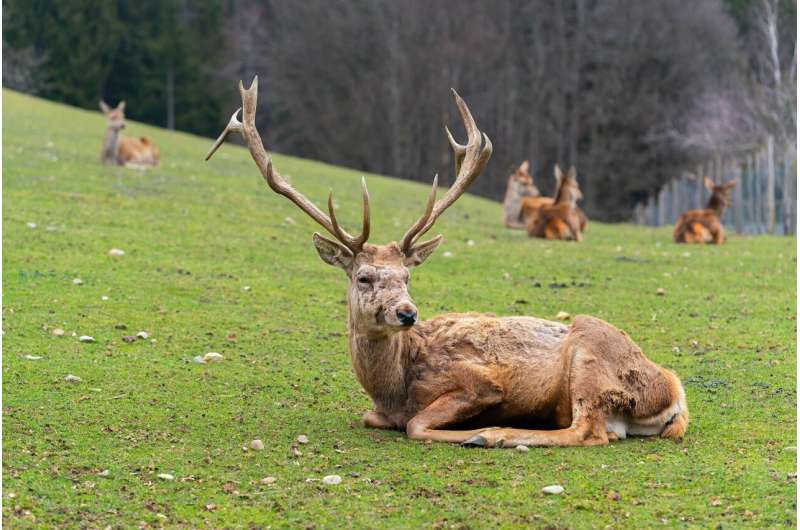This article has been reviewed according to Science X's editorial process and policies. Editors have highlighted the following attributes while ensuring the content's credibility:
fact-checked
peer-reviewed publication
trusted source
proofread
New study suggests culling animals who 'don't belong' can be a flawed nature conservation practice

New research published today in the journal Science has concluded that eradicating animals on the basis that they are not native in order to protect plant species can be a flawed practice costing millions of dollars, and resulting in the slaughter of millions of healthy wild animals.
Introduced large herbivores, or megafauna, are claimed to have distinct and harmful ecological impacts, including damaging sensitive plants and habitats, reducing native plant diversity, and facilitating introduced plants. However, up to now these impacts have been studied without comparison to a proper control: native megafauna.
The new analysis, carried out by researchers at Aarhus University, Denmark, and the University of Oxford, UK, compared the effects of large mammal species listed as native and introduced, respectively, in 221 studies from across the world. They found that the two groups of animals had indistinguishable effects on both the abundance and diversity of native plants.
Study co-author Dr. Jeppe Kristensen (The Environmental Change Institute, University of Oxford), said, "We do not find evidence to support the claim that native large herbivores have different impacts on ecosystems, specifically plant communities in this case, than their non-native counterparts. Therefore, we should study the ecological roles these animals—native or not—play in ecosystems rather than judge them based on their belonging."
However, the researchers did find that the traits of megafauna influenced how they affect plants, regardless of nativeness. In particular, small-bodied picky-eaters, such as deer, tended to suppress plant diversity while larger, generalist bulk-feeders such as buffalo tended to increase plant diversity. This is because large, bulk-feeders are physically unable to selectively feed on their favorite plants and are therefore more likely to suppress dominant species, making space for smaller sub-dominant plant species.
The researchers also found that the body mass of individual animals had a significant effect, but not the combined weight of animals on the landscape. This testifies to the unique effects of large and very large animals, compared with smaller animals.
Dr. Kristensen added, "While one elephant can push over a mid-sized tree, 50 red deer cannot. You can't total the body mass to understand the effect of animal presence on the landscape; you have to consider the effect of each animal species present."
The authors point out that the study specifically assessed large mammal herbivores, and that nativeness may remain an important way to understand other types of ecological interactions. For instance, more specialized introduced species such as introduced tree pests may have really distinct effects on ecosystems because native species did not coevolve with them.
Millions of dollars are spent eradicating animals each year due to our perception of them not belonging in a certain place. Paradoxically, many of those animals are endangered in their home ranges and therefore at risk of diminishing if we were to be successful with the eradication where they are perceived invasive.
Senior author Professor Jens-Christian Svenning (Aarhus University) added, "This interpretation suggests that functional niches vacated by extinctions and extirpations in recent prehistory, often due to humans, are better refilled with animals with similar functional traits as the ones that were lost even if these new species are non-native or feral."
Introducing large animals to replace extinct ones that performed crucial ecosystem functions is becoming a popular conservation practice, including in the UK and the rest of Europe. According to the researchers, the new study lends support to this as an adaptive conservation approach, which focuses on re-establishing functions rather than concepts of belonging.
Lead author Dr. Erick Lundgren (Aarhus University) said, "Our findings suggest it is time to start using the same standards to understand the effects of native and introduced organisms alike and to consider seriously the implications of eradication and culling programs that are based on cultural notions of 'belonging.' Instead, introduced animals should be studied in the same way as any native wildlife, through the lens of functional ecology."
More information: Erick J. Lundgren et al, Functional traits—not nativeness—shape the effects of large mammalian herbivores on plant communities, Science (2024). DOI: 10.1126/science.adh2616. www.science.org/doi/10.1126/science.adh2616
Journal information: Science
Provided by University of Oxford




















